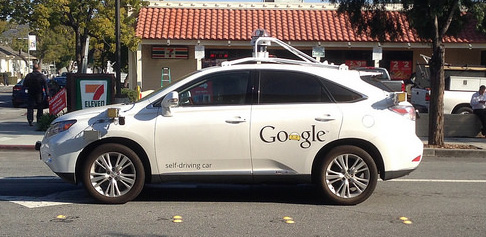4 Ways You Can Prepare Your Fleet Now for Autonomous Vehicles
Ready or not, autonomous vehicles (AVs) are coming, and with them will come a change in vehicle makeup and required maintenance. However, don’t panic. There is still time to prepare for self-driving vehicles.
While manufacturers and government officials are working on how to enable AVs to operate safely on the roadways, here are things fleets can do now to get ready.
Integrate New Technology Now
Cox Automotive predicts the mass adoption of AVs will begin in 2023. However, due to recent advances in technology, vehicles on the road today are already trending towards becoming autonomous.
According to the Governors Highway Safety Association (GHSA), levels of AVs range from zero to five:
- Zero: The driver is in complete control of the vehicle at all times
- One: Automation provides some driver assistance, as the vehicle can assist the driver by taking control of either its speed through cruise control, or lane position through lane guidance.
- Two: Automation provides some self-driving as the vehicle can control both speed and lane guidance. This is only allowed in certain settings, like limited-access freeways.
- Three: The vehicle is in complete control in some situations and will notify the driver when he or she needs to retake control.
- Four: The vehicle is in complete control for the entire trip in specific situations.
- Five: The vehicle can operate without a human driver or passengers.
Currently, we are on stage two as newer advancements are making cars more autonomous. Some examples include tools to keep vehicles in their lanes, alerting drivers if there is a car in their blind spot, collision warnings and adaptive headlights.
Experts recommend adapting these new technologies now to both take advantage of the increased safety features and to start preparing fleets for AVs.
“Take full advantage of what automated vehicle features are available now. Even if it costs a bit more initially, the safety benefits and liability cost avoidance more than pay for these enhancements, many of which will be mandated in the near future,” Dan McGehee, director of the National Advanced Driving Simulator Laboratory, told Government-Fleet.com.
Show Benefits to Drivers, Staff
The prospect of self-driving vehicles might be threatening to fleet drivers.
“Automated vehicle technology could incorrectly be viewed as a change that will eliminate driving jobs,” Shelia Cotten, Michigan State University Foundation professor of media and information, said in a report on AVs.
This can inhibit fleets’ ability to recruit new drivers and make it more difficult to retain current employees.
To curb this, fleets need to communicate to drivers that in most cases, new technology will support drivers – not replace them.
The Insurance Institute for Highway Safety recently released the results of a study that shows advanced driver assistance systems aren’t ready to replace human drivers. In particular, the study showed adaptive cruise control and active lane-keeping weren’t consistent in approaching stopped vehicles and traveling through hills and curves.
“The early results underscore the fact that today’s systems aren’t robust substitutes for human drivers,” the report stated.
In addition to calming drivers’ fears, managers can start prepping staff members for some potentially new positions and skills the operation might need.
Cotten stated in the report by MSU that AVs could lead to many new jobs in the fleet industry as operations adapt to the new technology. Some of these areas include: engineering, data analysis, cybersecurity and vehicle monitoring.
Connect with Local Agencies
The process of getting autonomous vehicles on the road is long and ever changing. To keep up with the latest regulations, infrastructure changes and technology, fleet operations should connect with local groups and organizations that are staying abreast of the updates.
Jim Hedlund, a consultant with Highway Safety North who is researching autonomous vehicles and traffic safety for the GHSA, recommends fleet managers reach out to organizations like the Association of Motor Vehicle Administrators (AAMVA) to stay informed.
“Be informed, be a player, join a task force, mesh with what’s going on. AAMVA represents motor vehicle and transportation departments nationwide,” Hedlund said, according to Government-Fleet.com.

Source: Ed and Eddie
Monitor Progress and Tests by Other Organizations
Fleet managers and operations can get informed on how other operations are integrating AVs by following industry news and events.
One way to stay current is by attending fleet conferences. These events can provide updates on AVs and best practices on how to integrate new technology into your fleet. Webinars and newsletters can also provide tips.
Setting up news alerts for AVs can keep operations updated on recent news stories and press releases involving self-driving vehicle developments and tests.
Networking with others in the industry can also provide an opportunity to stay abreast of the latest trends and happenings.
Looking for an industry conference to attend? RTA hosts a Users’ Conference each year. Find out more details here.
By Steve Saltzgiver, Fleet Success Advisor Disruptions in the supply chain can have far-reaching consequences, affecting various industries and sectors. […]
By Mary Gerard, Content Marketing Manager Where does 60% of your fleet’s budget go each year? Fuel. While depreciation is […]
By Steve Saltzgiver, Fleet Success Senior Advisor Fleet organizations with robust transportation networks need to run efficiently to keep their […]
Related Articles

Your fleet management information system (FMIS) is arguably the most important software your fleet has. And chances are, you’re nowhere […]

RTA Awarded Fleet Management Software Contract from the Commonwealth of Massachusetts Award allows all state, and local government entities as […]
